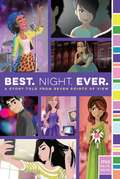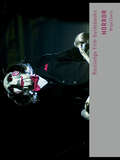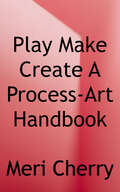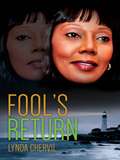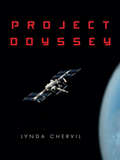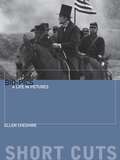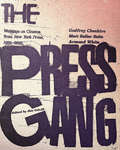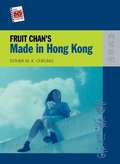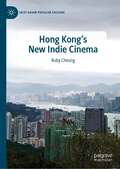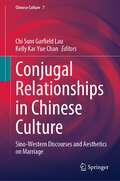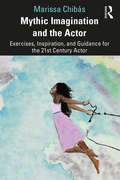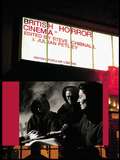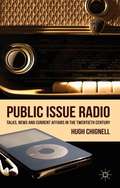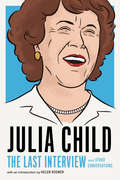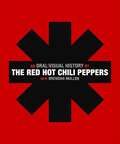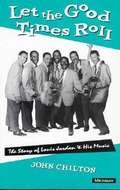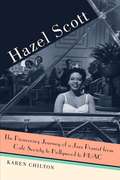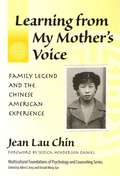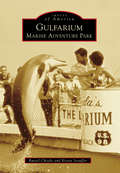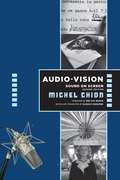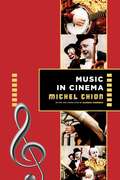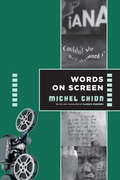- Table View
- List View
Best. Night. Ever.: A Story Told from Seven Points of View
by Alison Cherry Stephanie Faris Rachele Alpine Jen Malone Gail Nall Ronni Arno Dee RomitoLove Actually meets Adventures in Babysitting in this hilarious novel written by seven authors about seven classmates who are preparing for a crazy night at their middle school dance.Lynnfield Middle School is prepped and ready for a dance to remember, including an awesome performance from Heart Grenade, the all-girl band who recently won a Battle of the Bands contest. Seven classmates—Carmen, Genevieve, Tess, Ryan, Ellie, Ashlyn, and Jade—intend to make the most of the night…or at least the five of them who are able to attend do. The other two would sacrifice almost anything to be there. One thing’s for sure—this entire crew is in for one epic night! Gail Nall, Dee Romito, Rachele Alpine, Ronni Arno, Alison Cherry, Stephanie Faris, and Jen Malone have created a charming, hilarious, and relatable novel that’s perfect for anyone who can’t wait to dance the night away.
Horror (Routledge Film Guidebooks)
by Brigid CherryHorror cinema is a hugely successful, but at the same time culturally illicit genre that spans the history of cinema. It continues to flourish with recent cycles of supernatural horror and torture porn that span the full range of horror styles and aesthetics. It is enjoyed by audiences everywhere, but also seen as a malign influence by others. In this Routledge Film Guidebook, audience researcher and film scholar Brigid Cherry provides a comprehensive overview of the horror film and explores how the genre works. Examining the way horror films create images of gore and the uncanny through film technology and effects, Cherry provides an account of the way cinematic and stylistic devices create responses of terror and disgust in the viewer. Horror examines the way these films construct psychological and cognitive responses and how they speak to audiences on an intimate personal level, addressing their innermost fears and desires. Cherry further explores the role of horror cinema in society and culture, looking at how it represents various identity groups and engages with social anxieties, and examining the way horror sees, and is seen by, society.
Play, Make, Create, A Process-art Handbook: With 43 Art Invitations for kids creative activities and projects to inspire free thinking, mindfulness, and curiosity
by Meri CherryPacked with joyful and educational art experiences for kids, Play, Make, Create offers fun and engaging imaginative activities focused on the fun and reward of creating, not just producing a final project. Founded in a process-based philosophy, this unique book includes more than 40 activities set up as invitations, or thoughtfully designed prompts to explore, create, and play.
Fool’s Return
by Lynda ChervilEvery journey begins with one small step--and for venture capitalist Gabrielle, the journey begins when she sets foot in Castine, Maine. Initially drawn to the scenic locale to prospect for breakthrough battery technology, she soon discovers that there's more to her trip than she bargained for and that her business in Castine is but one stop on the greater journey she is meant to take. From unexpected encounters with an eccentric fortune-teller and an enigmatic man to business sabotage attempts and haunting dreams, Gabrielle's trip is wrought with complications, and she must overcome numerous obstacles in the course of her business as well as in her personal endeavors. But the greatest challenge Gabrielle faces is leaving the town. Something in Castine is keeping her there, and it won't let her leave until she's learned what the universe wants her to learn. Fool's Return is an entirely captivating and thought-provoking story about self-discovery, confronting challenges, and understanding one's place in the world. It delves into esoteric topics such as tarot, past life regression, and vivid dreams and broaches controversial issues surrounding the ongoing battle between those in support of sustainable living and those dedicated to maintaining the status quo.
Project Odyssey
by Lynda ChervilVenture capitalist Gabrielle Landrieu represents a client who has developed material necessary for an orbiting solar power station called Project Odyssey. But when the client goes missing, Gabrielle testifies on his behalf before a congressional committee that is considering funding for the project. Despite her best efforts, the committee remains gridlocked, heavily influenced by special interest groups who are concerned the new power station will hurt their bottom line. Following the hearing, Gabrielle finds her family under threat from dark forces as she continues her search for her missing client. Struggling to navigate the political pitfalls of the project, she soon learns that more and more investors are dropping out, due to threats and uncertainty. Undaunted, she digs deeper, until she discovers who is planning to fill their pockets through a shocking conspiracy designed to derail the program. Gabrielle risks her family, her career, and her life to expose the sinister plot involving corrupt politicians and corporate interests, devoted to making sure the revolutionary energy project gets off the ground. From political intrigue to exciting aerospace technology, Project Odyssey is a nonstop high-tech thriller that will engage you with one of the most critical environmental issues of our time.
Bio-pics: A Life in Pictures (Short Cuts)
by Ellen CheshireBio-pics: A Life in Pictures offers a series of case studies which throw light on this most unique of genres. Is the bio-pic a genre in its own right? Or are such films merely footnotes in other more traditional genres such as the western or costume drama, depending on the historical figure under scrutiny. Unlike other genre forms bio-pics seemingly share no familiar iconography, codes or conventions. They can be set anywhere and at any time. What links them is quite simply that the films depict the life of an 'important' person. Through a carefully selected range of thematically linked (English-language) bio-pics released since 1990 this book explores key issues surrounding their resurgence, narrative structure, production, subject representation or misrepresentation, and critical response. The films under discussion are grouped around a profession (writers, singers, politicians, sportsmen, criminals, artists) allowing for comparisons to be drawn in approaches to similar subject matter.
Bio-pics: A Life in Pictures
by Ellen CheshireThrough a carefully selected range of thematically linked bio-pics, explores key issues surrounding their resurgence, structure, production, subject representation or misrepresentation, and critical response
Bio-pics
by Ellen CheshireThrough a carefully selected range of thematically linked bio-pics, explores key issues surrounding their resurgence, structure, production, subject representation or misrepresentation, and critical response
The Press Gang: Writings on Cinema from New York Press, 1991-2011
by Godfrey Cheshire Matt Zoller Seitz Armond WhiteA dialogue about cinema's legacy and best directors through essays by three of the best long-form critics out there, collected from the legendary NYPress for the first time.Comprising of the kind of long-form criticism that is all too rare these days, the weekly film columns in the NYPress included polemics, reviews, interviews, festival reports and features. A far cry from what is often derisively termed the "consumer report" mode of criticism, Cheshire, Seitz and White were passionately engaged with the film culture of both their own time, and what had come before. They constituted three distinctly different voices: equally accomplished, yet notably individual, perspectives on cinema. Their distinctive tastes and approaches were often positioned in direct dialogue with each other, a constant critical conversation that frequently saw each writer directly challenging his colleagues. Dialogue is important in criticism, and here you can find a healthy example of it existing under one proverbial roof. This three-way dialogue between Cheshire, Seitz and White assesses the 1990s in cinema, along with pieces on New York's vibrant repertory scene that allow us to read the authors' takes on directors such as Hitchcock, Lean, Kubrick, Welles, Fassbinder and Bresson; as well as topics such as the legacy of Star Wars, film noir, early film projection in New York City, the New York Film Critics Circle, Sundance, the terrorist attacks of 9/11 and the emerging cinema of Iran and Taiwan.
Fruit Chan's Made in Hong Kong
by Esther M. K. CheungThis tragic coming-of-age story follows three disillusioned local youths struggling to navigate Hong Kong public housing projects and late adolescence amid violent crime, gang pressure, and broken homes. Their personal friendships and family lives intersect with a mysterious fourth protagonist, a girl whose suicide haunts the other three throughout the film as they move toward their own premature ends. This 1997 film was the first in Chan's acclaimed "handover trilogy." Shot on a very low budget, utilizing excess film stock, amateur actors, and a crew of five, it marked the beginning of Chan's career as an independent film director.
Hong Kong's New Indie Cinema (East Asian Popular Culture)
by Ruby CheungThis book explores 2010s Hong Kong film industry, focusing on its (presumably) independent sector. Although frequently mentioned in global film industry studies, the term ‘independent film’ does not always carry a clear meaning. Starting with this point, this book studies closely Hong Kong’s new indie cinema of the 2010s from political, economic, social, cultural, and film industrial perspectives, arguing that this indie cinema was vital to the long-term sustainability of the city’s film industry.
Conjugal Relationships in Chinese Culture: Sino-Western Discourses and Aesthetics on Marriage (Chinese Culture #7)
by Chi Sum Garfield Lau Kelly Kar Yue ChanThis book reviews the presentation of conjugal relationships in Chinese culture and their perception in the West. It explores the ways in which the act of marriage is represented/misrepresented in different literary genres, as well as in cultural adaptations. It looks at the gendered characteristics at play that affect conjugal relationships in Chinese societal practices more widely. It also distinguishes between the essential features that give rise to nuptial arrangements from the Chinese perspective, looking at what in which Sino and/or Western mentalities differ in terms of notions of autonomy in marriage. It excavates the extent to which marriage is constituted in forms of transaction between female and male bodies and asks under what circumstances wedding ceremonies constitute archetypal or counter-archetypal notions in pre-modern and modern society. Authors cover a range of fascinating cultural topics, such as posthumous marriage (necrogamy) as an ancient and popular folk culture from the perspective of Confucian ideology, as well as looking at marriage from ancient to present times, duty and rights in conjugal relations, inter-racial and inter-cultural marriage, widowhood in Confucian ideology, issues of legitimacy in marriage and concubinage, the taboos surrounding divorce and re-marriage, and conjugal violence. The book serves to revisit the cultural connections between marriage and various art forms, including literature, film, theatre, and other adaptations. It is a rich intellectual resource for scholars and students researching the historical roots, cultural interpretations, and evolving aspects of marriage as shown in literature, art, and culture.
Mythic Imagination and the Actor: Exercises, Inspiration, and Guidance for the 21st Century Actor
by Marissa ChibásIn Mythic Imagination and the Actor, Marissa Chibás draws on over three decades of experience as a Latinx actor, writer, filmmaker, and teacher to offer an approach to acting that embraces collective imagination, archetypal work, and the mythic. The book begins with a comparative analysis between method acting and mythic acting, encouraging actors to push past the limits of singular life experience and move to a realm where imagination and metaphor thrive. In the context of mythic acting, the book explores awareness work, solo performance creation, the power of archetypes, character building exercises, creating a body/text connection, and how to be the detective of your own process. Through this inclusive guide for a new age of diverse performers traversing gender, ability, culture, and race, readers are able to move beyond their limits to a deep engagement with the infinite possibilities of rich imagination. The final chapter empowers and motivates artists to live healthfully within the practice and create a personal artistic vision plan. Written for actors and students of acting, American Drama, and film and theatre studies, Mythic Imagination and the Actor provides practical exercises and prompts to unlock and interpret an actor’s deepest creative sources.
Mythic Imagination and the Actor: Exercises, Inspiration, and Guidance for the 21st Century Actor
by Marissa ChibásIn Mythic Imagination and the Actor, Marissa Chibás draws on over three decades of experience as a Latinx actor, writer, filmmaker, and teacher to offer an approach to acting that embraces collective imagination, archetypal work, and the mythic. The book begins with a comparative analysis between method acting and mythic acting, encouraging actors to push past the limits of singular life experience and move to a realm where imagination and metaphor thrive. In the context of mythic acting, the book explores awareness work, solo performance creation, the power of archetypes, character building exercises, creating a body/text connection, and how to be the detective of your own process. Through this inclusive guide for a new age of diverse performers traversing gender, ability, culture, and race, readers are able to move beyond their limits to a deep engagement with the infinite possibilities of rich imagination. The final chapter empowers and motivates artists to live healthfully within the practice and create a personal artistic vision plan.Written for actors and students of acting, American Drama, and film and theatre studies, Mythic Imagination and the Actor provides practical exercises and prompts to unlock and interpret an actor’s deepest creative sources.
British Horror Cinema (British Popular Cinema)
by Steve Chibnall Julian PetleyBritish Horror Cinema investigates a wealth of horror filmmaking in Britain, from early chillers like The Ghoul and Dark Eyes of London to acknowledged classics such as Peeping Tom and The Wicker Man. Contributors explore the contexts in which British horror films have been censored and classified, judged by their critics and consumed by their fans. Uncovering neglected modern classics like Deathline, and addressing issues such as the representation of family and women, they consider the Britishness of British horror and examine sub-genres such as the psycho-thriller and witchcraftmovies, the work of the Amicus studio, and key filmmakers including Peter Walker. Chapters include: the 'Psycho Thriller' the British censors and horror cinema femininity and horror film fandom witchcraft and the occult in British horror Horrific films and 1930s British Cinema Peter Walker and Gothic revisionism. Also featuring a comprehensive filmography and interviews with key directors Clive Barker and Doug Bradley, this is one resource film studies students should not be without.
Public Issue Radio: Talks, News and Current Affairs in the Twentieth Century
by Hugh ChignellBased on original and previously unseen written and sound archives and interviews with former and current radio producers and presenters, Public Issue Radio addresses the controversial question of the political leanings of current affairs programmes, and asks if Analysis became an early platform for both Thatcherite and Blairite ideas.
Julia Child: and Other Conversations (The Last Interview Series)
by Julia ChildA delightful collection of interviews with the beloved Julia Child--"The French Chef," author, and television personality who revolutionized home cooking in 20th century AmericaThis delightful collection of interviews with "The French Chef" Julia Child traces her life from her first stab at a writing career fresh out of college; to D.C., Sri Lanka, and Kunming where she worked for the Office of Strategic Services (now the CIA); to Paris where she and her husband Paul, then a member of the State Department, lived after World War II, and where Child attended the famous cooking school Le Cordon Bleu. From there, Child catapulted to fame--first with the publication of Mastering the Art of French Cooking in 1961 and the launch of her home cooking show, "The French Chef" in 1963. In this volume of carefully selected interviews, Child's charm, guile, and no-nonsense advice are on full, irresistibly delicious display. Includes an Introduction from Helen Rosner, food critic for the New Yorker.
The Red Hot Chili Peppers: An Oral/Visual History
by The ChiliThe Red Hot Chili Peppers is the iconic band's audacious look back at their thirty-year odyssey—in their own words and accompanied by more than 300 spectacular photos and ephemera. Intimate, breathtaking, and outrageous, this is the essence of the Red Hot Chili Peppers."I am struck with the moments of these photos, the feelings of the times they were taken, and where we were at on our beautiful and happy-sad journey. It's pretty fucking heavy, actually, like thinking how much we have changed over the years, and all the different dynamics of our lives that shaped us, and also realizing so clearly that nothing has changed at all—we're all still just trying to get it on, make something great."It is all here, nothing can hide: all the honesty, the pretense, the courage and one-of-a-kind-ness, the unbridled joy, the melancholy, and the shields we put up to shelter our scared, vulnerable little selves."—Flea
Hazel Scott: The Pioneering Journey of a Jazz Pianist, from Cafe Society to Hollywood to HUAC
by Karen Chilton"Hazel Scott was an important figure in the later part of the Black renaissance onward. Even in an era where there was limited mainstream recognition of Black Stars, Hazel Scott's talent stood out and she is still fondly remembered by a large segment of the community. I am pleased to see her legend honored." ---Melvin Van Peebles, filmmaker and director "This book is really, really important. It comprises a lot of history---of culture, race, gender, and America. In many ways, Hazel's story is the story of the twentieth century." ---Murray Horwitz, NPR commentator and coauthor of Ain't Misbehavin' "Karen Chilton has deftly woven three narrative threads---Adam Clayton Powell, Jr., Harlem, and Hazel Scott---into a marvelous tapestry of black life, particularly from the Depression to the Civil Rights era. Of course, Hazel Scott's magnificent career is the brightest thread, and Chilton handles it with the same finesse and brilliance as her subject brought to the piano." ---Herb Boyd, author of Baldwin's Harlem: A Biography of James Baldwin "A wonderful book about an extraordinary woman: Hazel Scott was a glamorous, gifted musician and fierce freedom fighter. Thank you Karen Chilton for reintroducing her. May she never be forgotten." ---Farah Griffin, Institute for Research in African-American Studies, Columbia University In this fascinating biography, Karen Chilton traces the brilliant arc of the gifted and audacious pianist Hazel Scott, from international stardom to ultimate obscurity. A child prodigy, born in Trinidad and raised in Harlem in the 1920s, Scott's musical talent was cultivated by her musician mother, Alma Long Scott as well as several great jazz luminaries of the period, namely, Art Tatum, Fats Waller, Billie Holiday and Lester Young. Career success was swift for the young pianist---she auditioned at the prestigious Juilliard School when she was only eight years old, hosted her own radio show, and shared the bill at Roseland Ballroom with the Count Basie Orchestra at fifteen. After several stand-out performances on Broadway, it was the opening of New York's first integrated nightclub, Café Society, that made Hazel Scott a star. Still a teenager, the "Darling of Café Society" wowed audiences with her swing renditions of classical masterpieces by Chopin, Bach, and Rachmaninoff. By the time Hollywood came calling, Scott had achieved such stature that she could successfully challenge the studios' deplorable treatment of black actors. She would later become one of the first black women to host her own television show. During the 1940s and 50s, her sexy and vivacious presence captivated fans worldwide, while her marriage to the controversial black Congressman from Harlem, Adam Clayton Powell, Jr., kept her constantly in the headlines. In a career spanning over four decades, Hazel Scott became known not only for her accomplishments on stage and screen, but for her outspoken advocacy of civil rights and her refusal to play before segregated audiences. Her relentless crusade on behalf of African Americans, women, and artists made her the target of the House Un-American Activities Committee (HUAC) during the McCarthy Era, eventually forcing her to join the black expatriate community in Paris. By age twenty-five, Hazel Scott was an international star. Before reaching thirty-five, however, she considered herself a failure. Plagued by insecurity and depression, she twice tried to take her own life. Though she was once one of the most sought-after talents in show business, Scott would return to America, after years of living abroad, to a music world that no longer valued what she had to offer. In this first biography of an important but overlooked African American pianist, singer, actor and activist, Hazel Scott's contributions are finally recognized. Karen Chilton is a New York-based writer and actor, and the coauthor of I Wish You Love, the memoir of legendary jazz vocalist Gloria Lynne.
Learning from My Mother's Voice: Family Legend and the Chinese American Experience
by Jean Lau Chin"As the reader takes Jean Lau Chin's guided tours through myth and cultural history, it is clear that these stories are more than entertainment: They represent cultural messages about living as a woman. The juxtaposition of Chinese and Western myths with their similarities and differences, followed by the author's incisive analysis of contemporary stories depicting Asian women in print and on the screen, provide culturally driven connections to perceptions and behaviors of Chinese women both individually and in relation to the world. Through these stories, a rich tapestry of information about Chinese women and Chinese American women emerges. The stereotypical Chinese woman fails to appear as the various lenses of ethnicity, gender, location, and epoch make explicit the diversity that exists within any ethnic group and liberate us by providing an informed array of images and possibilities." From Book
Gulfarium Marine Adventure Park (Images of America)
by Russel Chiodo Krista StoufferJohn "Brandy" Siebenaler and his wife, Marjorie, founded the Gulfarium, the first marine attraction of its kind on the Florida Panhandle. Since the gates first swung open in 1955, guests flocked to the Gulfarium. Displays of live specimens collected from the nearby Gulf of Mexico waters by Brandy, his associates, and Destin's fishing families gave visitors a chance to view life below the sea as they had never seen it before. The park's spectacular dolphin shows gained national recognition, and the high-flying porpoises were trained by none other than Marjorie, who quickly became an acclaimed expert for her innate ability to connect with the animals. Beyond the on-cue performances of sky-high leaps, hoop jumps, and clever antics in the pool, the Gulfarium is part of a greater mission. It plays a critical role in the rescue, rehabilitation, and release of stranded marine mammals, sea turtles, and other native wildlife--a need it has continued to serve for more than half a century.
Audio-Vision: Sound On Screen
by Michel ChionMichel Chion’s landmark Audio-Vision has exerted significant influence on our understanding of sound-image relations since its original publication in 1994. Chion argues that sound film qualitatively produces a new form of perception. Sound in audiovisual media does not merely complement images. Instead, the two channels together engage audio-vision, a special mode of perception that transforms both seeing and hearing. We don’t see images and hear sounds separately—we audio-view a trans-sensory whole.In this updated and expanded edition, Chion considers many additional examples from recent world cinema and formulates new questions for the contemporary media environment. He takes into account the evolving role of audio-vision in different theatrical environments, considering its significance for music videos, video art, commercial television, and the internet, as well as conventional cinema. Chion explores how multitrack digital sound enables astonishing detail, extending the space of the action and changing practices of scene construction. He demonstrates that speech is central to film and television and shows why “audio-logo-visual” is a more accurate term than “audiovisual.” Audio-Vision shows us that sound is driving the creation of a sensory cinema.This edition includes a glossary of terms, a chronology of several hundred significant films, and the original foreword by sound designer, editor, and Oscar honoree Walter Murch.
Music in Cinema (Film and Culture Series)
by Michel ChionMichel Chion is renowned for his explorations of the significance of frequently overlooked elements of cinema, particularly the role of sound. In this inventive and inviting book, Chion considers how cinema has deployed music. He shows how music and film not only complement but also transform each other.The first section of the book examines film music in historical perspective, and the second section addresses the theoretical implications of the crossover between art forms. Chion discusses a vast variety of films across eras, genres, and continents, embracing all the different genres of music that filmmakers have used to tell their stories. Beginning with live accompaniment of silent films in early movie houses, the book analyzes Al Jolson’s performance in The Jazz Singer, the zither in The Third Man, Godard’s patchwork sound editing, the synthesizer welcoming the flying saucer in Close Encounters of the Third Kind, and the Kinshasa orchestra in Felicité, among many more. Chion considers both original scores and incorporation of preexisting works, including the use and reuse of particular composers across cinematic traditions, the introduction of popular music such as jazz and rock, and directors’ attraction to atonal and dissonant music as well as musique concrète, of which he is a composer.Wide-ranging and original, Music in Cinema offers a welcoming overview for students and general readers as well as refreshingly new and valuable perspectives for film scholars.
Words on Screen (Film and Culture Series)
by Michel ChionMichel Chion is well known in contemporary film studies for his innovative investigations into aspects of cinema that scholars have traditionally overlooked. Following his work on sound in film in Audio-Vision and Film, a Sound Art, Words on Screen is Chion's survey of everything the seventh art gives us to read on screen. He analyzes titles, credits, and intertitles, but also less obvious forms of writing that appear on screen, from the tear-stained letter in a character's hand to reversed writing seen in mirrors. Through this examination, Chion delves into the multitude of roles that words on screen play: how they can generate narrative, be torn up or consumed but still remain in the viewer's consciousness, take on symbolic dimensions, and bear every possible relation to cinematic space.With his characteristic originality, Chion performs a poetic inventory of the possibilities of written text in the film image. Taking examples from hundreds of films spanning years and genres, from the silents to the present, he probes the ways that words on screen are used and their implications for film analysis and theory. In the process, he opens up and unearths the specific poetry of visual text in film. Exhaustively researched and illustrated with hundreds of examples, Words on Screen is a stunning demonstration of a creative scholar's ability to achieve a radically new understanding of cinema.
